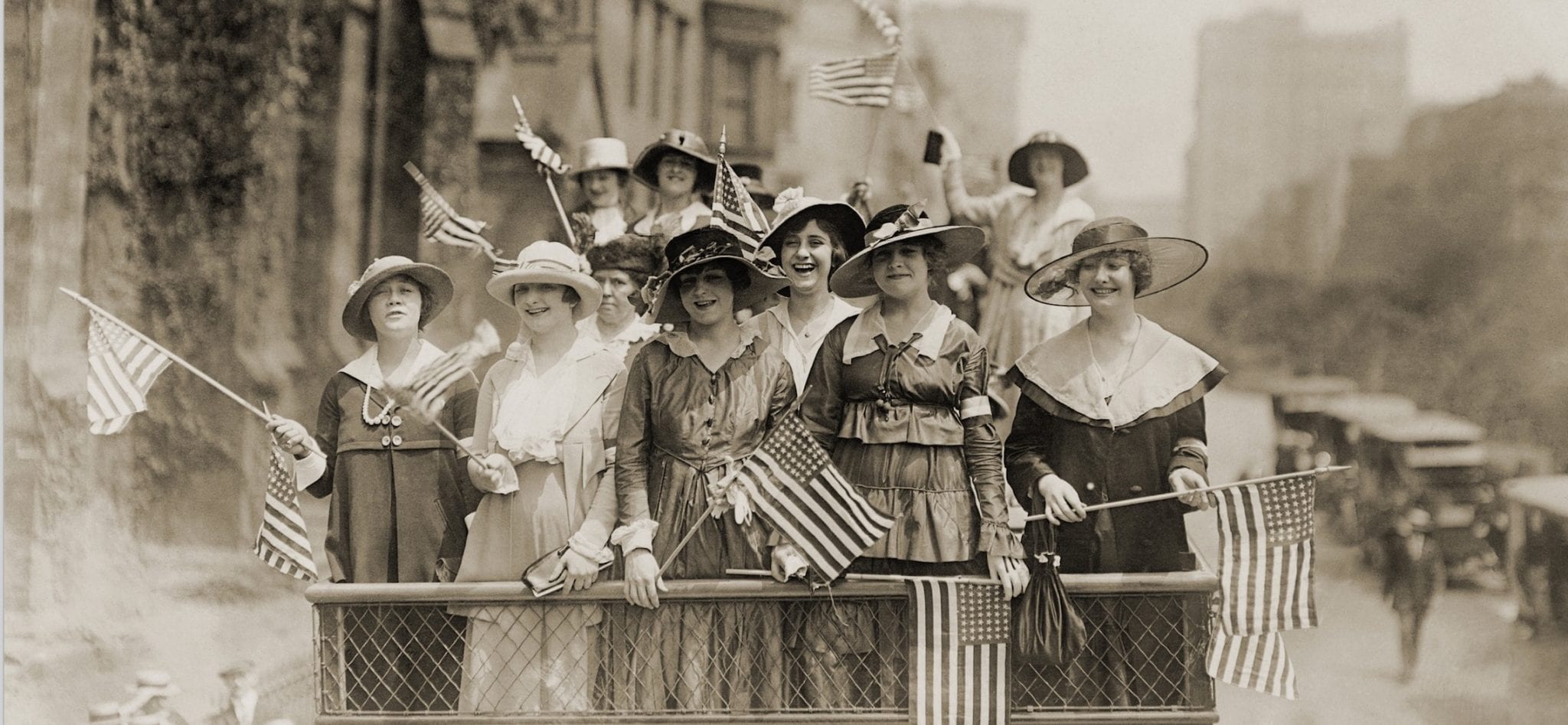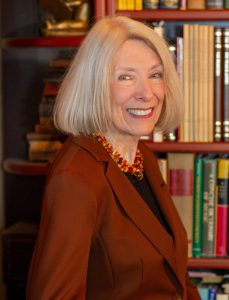
Event details
- Monday | August 24, 2020
- 7:00 pm - 8:30 pm
- Zoom - see link in text below
- (864) 596-3503
View Map | Cost: Free
From Parlor to Politics: Woman’s Fight for the Right to Vote, presented by Annette Baldwin
Join us for the astonishing history of the vision, courage, strategic planning, networking and tenacity demonstrated to win the 72-year battle for women’s political, social and legal equality. Learn of the conditions under which 19th century women lived and what provoked them into organization and revolution for women’s right to vote. As the story and the disturbing circumstances are revealed you will be impressed and inspired by the words of our woman suffrage leaders who lived this journey and dedicated the majority of their adult lives to guaranteeing a more egalitarian society: Lucretia Mott, Elizabeth Cady Stanton, Susan B. Anthony and Alice Paul. The story continues Tuesday evening, August 25, 7pm when Annette portrays suffrage leader and founder of the League of Women Voters – Carrie Chapman Catt, who will be “at home”
Please register in advance for this FREE Online event. (Meeting room capacity is 300.) Everyone who registers for the meeting will receive a link to a recording of the program which will be available to view for one week.
REGISTER FOR PARLOR TO POLITICS
https://infodepot-org.zoom.us/meeting/register/tZ0od-2gqTMsHNPcZEBREaupecsFLmzVzSji
(After registering, you will receive a confirmation email containing additional information about joining the meeting. If this is the first time you have attended a Zoom event, you may be directed to download the Zoom app. You do NOT need a Zoom account to attend.)
This event is hosted by the Spartanburg County Public Libraries.


Annette Baldwin has been researching and performing first-person monologues since 1986 when she launched her portrayal of humanitarian and peace advocate Jane Addams. Baldwin’s First Person Portrayals, Visual Journeys Narratives and Readers Theater have been presented to audiences in 20 states. She has appeared at public libraries, educational institutions, community organizations, professional associations, state and federal government agencies, to the business community, at state and national conferences, special events and at historical societies and museums, including the National Museum of American History at the Smithsonian Institution in Washington, D.C. Baldwin, who resides in the Chicago suburbs, is also a former Illinois Humanities Road Scholar.
Past professional experience and personal discovery have inspired and guided Annette’s choices for performance and lecture topics. A deep admiration for the courage and devotion to advocacy for social change by 19th century through early 20th century women is the foundation for many of her programs, such as her portrayals of Jane Addams, Susan B. Anthony and Carrie Chapman Catt. Anthony and Catt also “appear” in Baldwin’s woman suffrage production, The Long Road to Victory, in which there are also vignettes of Lucretia Mott and Elizabeth Cady Stanton. Baldwin became interested in developing discussion on the California architect Julia Morgan, known primarily for William Randolph Hearst’s estate at San Simeon, California, when she was editor of the membership newsletter at the Chicago American Institute of Architects. Her interest in design and architecture can also be found in her Visual Journey Narratives of Mary Jane Colter, architect and designer for the Fred Harvey Company and the Santa Fe Railroad, as well as The Carnegie Library: Treasures on the Illinois Landscape for which she traveled the State of Illinois to photograph each of the 85 extant Carnegie libraries Her experience as a fashion director for Marshall Field’s, once Chicago’s iconic department store, influenced her research and performance as fashion designer Coco Chanel, as well as the Visual Journey The Arts and the Art of Dressing: 1920s Style.
Baldwin’s experience at many levels in community theater – directing and acting in particular – was not only the original driving force behind inaugurating her work as a solo performer and a lecturer, but it inspired her Readers Theater productions, Literary Lovers, By Necessity/ By Choice: Women in the Early Workplace, and Living the War: Women Inside the Confederate Capital. Having performed and lectured in the Chautauquas of Illinois, Missouri, Colorado, Nevada, Maryland, New Hampshire and Ohio, Baldwin has led dozens of programs with discussions on themes involving women’s social and political history, as well as fashion. StagingHistory.com
Prior to the Constitutional Convention, women in three colonies: Massachusetts, New York, and New Hampshire had the right to vote. In 1807, women in New Jersey lost the right to vote which was granted to them in 1797.
While women had discussed equality and the right to vote since the founding of the nation, the Suffrage Movement began in 1848 at the Seneca Falls convention held July 19-20, in Seneca Falls, New York. The meeting was not the first in support of women’s rights, but suffragists viewed it as the meeting that launched a national movement and cause. For the next 70 years, suffrage supporters worked to educate the public and lawmakers about the legitimate right of women to vote. Under the leadership of Susan B. Anthony, Elizabeth Cady Stanton, Lucretia Mott, Sojurner Truth, Ida B. Wells, and other women’s rights pioneers; suffragists circulated petitions and lobbied Congress to pass a constitutional amendment to enfranchise women.
One powerful motivation for the growth of the movement was social reform, led in large part by women. Since the late 18th century women were involved in reform movements such as Jane Addams settlement house; the temperance movement, Margaret Sanger’s push for birth control, Dorthea Dix and the reform of treatment of the mentally ill, and African American leaders like Ida B. Wells, who helped found National Association for the Advancement of Colored People (NAACP). They quickly discovered that politicians were unwilling to listen to a group who had no legal voice through voting. Understanding that in order to achieve reform, women needed the right to vote sparked a national movement for change and voting rights.
In the 20th century leadership of the suffrage movement passed to two organizations:
National American Woman Suffrage Association (NAWSA), under the leadership of Carrie Chapman Catt, was a moderate organization. The NAWSA undertook campaigns to enfranchise women in individual states, and simultaneously lobbied President Wilson and Congress to pass a woman suffrage Constitutional Amendment. In the 1910s, NAWSA’s membership numbered in the millions.
National Woman’s Party (NWP), under the leadership of Alice Paul, was a more militant organization. The NWP undertook radical actions, including picketing the White House, in order to convince Wilson and Congress to pass a woman suffrage amendment.
In 1920, 72 years after the Seneca Falls Convention, the 19th Amendment giving women the right to vote was ratified by Congress. The victory is considered the most significant achievement of women in the Progressive Era. It was the single largest extension of democratic voting rights in our nation’s history, and it was achieved peacefully, through democratic processes.
1869 National Woman Suffrage Association is founded with Elizabeth Cady Stanton as president. American Woman Suffrage Association is founded with Henry Ward Beecher as president. Wyoming Territory grants suffrage to women.
1870 Utah Territory grants suffrage to women. First issue of the Woman’s Journal is published with Lucy Stone and her husband Henry Blackwell as editors. The 15th amendment to the U. S. Constitution is adopted. The amendment grants suffrage to former male African-American slaves, but not to women. Anthony and Stanton bitterly oppose the amendment, which for the first time explicitly restricts voting rights to “males.” Many of their former allies in the abolitionist movement, including Lucy Stone, support the amendment.
1871 Victoria Woodhull addresses the Judiciary Committee of the House of Representatives arguing that women have the right to vote under the 14th amendment. The Committee issues a negative report.
1872 In Rochester, NY, Susan B. Anthony registers and votes contending that the 14th amendment gives her that right. Several days later she is arrested.
1873 At Anthony’s trial the judge does not allow her to testify on her own behalf, dismisses the jury, rules her guilty, and fines her $100. She refuses to pay.
1874 In Minor v. Happersett, the Supreme Court decides that citizenship does not give women the right to vote and that women’s political rights are under the jurisdiction of each individual state.
1876 Stanton writes a Declaration and Protest of the Women of the United States to be read at the centennial celebration in Philadelphia. When the request to present the Declaration is denied, Anthony and four other women charge the speakers’ rostrum and thrust the document into the hands of Vice-President Thomas W. Ferry.
1879 Belva Lockwood becomes the first woman lawyer admitted to practice before the Supreme Court.
1880 November 11: Lucretia Mott dies. New York state grants school suffrage to women.
1882 The House of Representatives and the Senate appoint Select Committees on Woman Suffrage.
1885 January 11: Alice Paul is born.
1887 The first three volumes of the History of Woman Suffrage, edited by Susan B. Anthony, Matilda Joslyn Gage and Elizabeth Cady Stanton, are published.
1888 The International Council for Women is founded and holds its first meeting in Washington, DC.
1890 After several years of negotiations, the NWSA and the AWSA merge to form the National American Woman Suffrage Association (NAWSA) with Elizabeth Cady Stanton, Susan B. Anthony and Lucy Stone as officers. Wyoming joins the union as the first state with voting rights for women. By 1900 women also have full suffrage in Utah, Colorado and Idaho. New Zealand is the first nation to give women suffrage.
1892 Susan B. Anthony becomes president of the NAWSA.
1893 October 18: Lucy Stone dies.
1895 Elizabeth Cady Stanton publishes The Woman’s Bible, a critical examination of the Bible’s teaching about women. The NAWSA censures the work.
1900 Anthony resigns as president of the NAWSA and is succeeded by Carrie Chapman Catt.
1902 October 26: Elizabeth Cady Stanton dies. Women of Australia are enfranchised.
1903 Carrie Chapman Catt resigns as president of the NAWSA and Anna Howard Shaw becomes president.
1906 March 13: Susan B. Anthony dies. Women of Finland are enfranchised.
1907 Harriet Stanton Blatch, daughter of Elizabeth Cady Stanton, founds the Equality League of Self-Supporting Women, later called the Women’s Political Union.
1908 March 8: International Women’s Day is celebrated for the first time.
1910 The Women’s Political Union holds its first suffrage parade in New York City.
1911 National Association Opposed to Woman Suffrage is founded.
1912 Suffrage referendums are passed in Arizona, Kansas, and Oregon.
1913 Alice Paul organizes a suffrage parade in Washington, DC, the day of Woodrow Wilson’s inauguration.
1914 Montana and Nevada grant voting rights to women. Alice Paul and Lucy Burns organize the Congressional Union for Woman Suffrage. It merges in 1917 with the Woman’s Party to become the National Woman’s Party.
1915 Suffrage referendum in New York State is defeated. Carrie Chapman Catt is elected president of the NAWSA. Women of Denmark are enfranchised.
1916 Jeannette Rankin, a Republican from Montana, is elected to the House of Representatives and becomes the first woman to serve in Congress. President Woodrow Wilson addresses the NAWSA.
1917 Members of the National Woman’s Party picket the White House. Alice Paul and ninety-six other suffragists are arrested and jailed for “obstructing traffic.” When they go on a hunger strike to protest their arrest and treatment, they are force-fed. Women win the right to vote in North Dakota, Ohio, Indiana, Rhode Island, Nebraska, Michigan, New York, and Arkansas.
1918 Women of Austria, Canada, Czechoslovakia, Germany, Hungary, Ireland, Poland, Scotland, and Wales are enfranchised. House of Representatives passes a resolution in favor of a woman suffrage amendment. The resolution is defeated by the Senate.
1919 Women of Azerbaijan Republic, Belgium, British East Africa, Holland, Iceland, Luxembourg, Rhodesia, and Sweden are enfranchised. The Nineteenth Amendment to the Constitution granting women the vote is adopted by a joint resolution of Congress and sent to the states for ratification. July 2: Anna Howard Shaw dies. New York and twenty-one other states ratify the Nineteenth Amendment.
1920 Henry Burn casts the deciding vote that makes Tennessee the thirty-sixth, and final state, to ratify the Nineteenth Amendment. August 26: The Nineteenth Amendment is adopted and the women of the United States are finally enfranchised.
Lucretia Mott said…
What would this nation be, of what could not this country boast, if she were free of the enormous system of injustice?
Statesmen and politicians and editors need constant watching, as indeed who or what class among us does not?
Elizabeth Cady Stanton said…
Nature never repeats itself, and the possibilities of one human soul will never be found in another.
Nothing strengthens the judgment and quickens the conscience like individual responsibility
Susan B. Anthony said…
I do not assume that woman is better than man. I do assume that she has a different way of looking at things.
The true woman will not be exponent of another, or allow another to be such for her. She will be her own individual self – do her own individual work – stand or fall by her own individual wisdom and strength.
Alice Paul said…
I never doubted that equal rights was the right direction. Most reforms….are complicated. There is nothing complicated about ordinary equality.
Carrie Chapman Catt said…
In matters of principle go against the current, but in matters of custom go with it.
I hope some day the world will return to sanity.
*Suffrage : women’s long battle for the vote by Ellen Carol Dubois (2020)
Why They Marched by Susan Ware
*The Women’s Suffrage Movement by Sally Roesch Wagner
*The Woman’s hour: the great fight to win the vote by Elaine F. Weiss
*Mr. President, how long must we wait? : Alice Paul, Woodrow Wilson and the fight for the right to vote by Tina Cassidy
(Starred items are available in the Greenville County Library System.)
